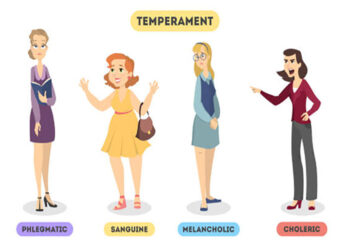
The Morse code is one thing that has struck my imagination in very interesting ways. I first heard of the Morse code from a war movie where soldiers were sending encrypted messages to each other using the Morse code. I didn’t recall the exact details of how the Morse code works until now.
Morse code is a simple, yet ingenious system of communication that has had a profound impact on modern technology. From the telegraph to the telephone to the internet, the application of the Morse code paved the way for digital communication in the present day.
In this article, we will explore the history of the Morse code, its early application, and the many ways in which it has impacted modern technology and communication, including the telegraph, telephone, radio, and computers.
Lastly, we will see how the future of the Morse code in the digital age.
What is Morse code and how does it work?
Morse code employs the fundamental symbols of dots (.) and dashes (-) in its translation. By combining dots and dashes in varying combinations, you can encode text characters including letters and numbers.
Each letter and number is represented by a given combination of these symbols. For instance, “.-” is used to express the letter “A”, whereas “.—-” is used to convey the number “1”.
Whole messages can be efficiently delivered via sound, light, or electronic signals by organizing these sequences using the Morse code machine. This machine can send two types of electrical pulses; a high-intensity and a low-intensity pulse.
The long/high-intensity pulse is called the DASH (pronounced ‘dah’) which is similar to the dash above, while the low-intensity or short pulse is called the DOT (pronounced ‘di’), as represented above. Thus, to produce the letter “A”, the machine will send a dot and a dash without any delay in between.
The Morse code can employ electric signals, sound waves, visible light, or radio waves to produce a sequence of long and short pulses to convey a message. The image below shows the international Morse Code for the English alphabet and the base Arabic numerals.

To send an encrypted “I love you” using Morse Code, you can write “.. ._.. _ _ _ …_ . _._ _ _ _ _ .._”
If you decide to send it as sound signals, I love you would sound like “Di-di | di-dah-di-di dah-dah-dah di-di-di-dah di | dah-di-dah-dah dah-dah-dah di-di-dah” where “di” represents the dots, and “dah” represents dashes.
A brief history of Morse code
The Morse Code is the functional mechanism of the telegraph system developed by the American inventor Samuel Morse and Alfred Vail, an American engineer in the early 19th century.
Morse wanted to develop a method that could transmit natural language over long distances using only electrical pulses and the silence between them. Around 1837, he developed an early forerunner to the modern International Morse code.
Thereafter, they collaborated to produce the early telegraph which could send messages over long distances even before the development of modern systems of communication. But this invention pioneered modern communication as we see it in the present day.
Morse Code’s Impact on Modern Communication Technology
The impact of Morse code translator on contemporary communication technology goes beyond the telegraph. It has impacted modern communication technologies like the telephone, the radio, computers, and others.
Let’s examine the important roles of the Morse code in the above technologies.
1. Morse code and the telephone
The development of the telephone was significantly aided by Morse code. The telegraph and Morse code served as inspiration for Alexander Graham Bell who developed the telephone about four decades down the line. Bell wanted to convey voice through a wire.
In 1876, Bell created the liquid transmitter, a device that could translate sound waves into electrical signals. The electrical signals were then transmitted across a wire to a receiver using Morse code and then transformed back into sound waves in the receiver.
On March 10, 1876, Bell placed his first telephone call to his assistant, Thomas Watson, saying, “Mr. Watson, come here, I want to see you.” Since then, the telephone has evolved into more sophisticated systems like we see today.
Morse code was used in the early days of the telephone to send both voice and telegraph messages. However, as telephone technology advanced, voice was directly transmitted via The Wire, negating the necessity for the Morse code.
In some telephone applications, such as teletype machines and TTY devices for the hearing impaired. Morse code is still utilized today. However, it is no longer widely used in ordinary telephony.
2. Morse code and radio
The development of radio was greatly aided by the use of Morse code. Morse code was used for the initial radio broadcasts, and for many years it was the main way to communicate over radio waves.
Guglielmo Marconi successfully transmitted the first wireless message in 1895 using Morse code. By eliminating the need for cables to carry signals over large distances, Marconi’s innovation revolutionized communication.
The military made considerable use of Morse code to communicate with soldiers on the front lines during World Wars I and II. In addition to using it for airborne communication, ships at sea also used it.
Morse code started to be phased out in favor of alternative communication methods after World War II and teletype. However, Morse code is still used today by amateur radio operators and by some emergency services organizations.
3. Morse code and computers
The evolution of computers has been significantly influenced by Morse code. Data was transferred between computers and stored on magnetic tape using Morse code in the early days of computing.
The “Colossus” was one of the first computers to decrypt German Enigma signals during World War II. It was developed in Britain. Data was stored on punched tape and sent between various parts of the Colossus via Morse code.
Morse code was still employed in computers for a number of uses after World War II. For instance, data was stored on magnetic tape and sent between computers over phone lines using Morse code. But today, most of these applications have been phased out and replaced by more advanced modern communication technology.
4. Morse code and other modern communication technologies
Other modern inventions that have greatly benefited from the Morse code include modems, fax machines, equipment for special education, and so on.
Modems transform computer signals into analog signals that can be transferred via phone lines. Early modems employed Morse code, but present-day devices use a range of different modulation techniques to send and receive data.
Fax machines are gadgets that use telephone connections to send scanned copies of documents between devices. There are currently various scanning and modulation methods used by fax machines, but earlier models used Morse code to send signals between the sender and receiver.
On equipment for special education, some teaching and special education programs have employed Morse code to assist pupils with disabilities in learning to read and write. Students with learning difficulties as a result of dyslexia, blindness, and cerebral palsy can benefit from this technology.
Many of these equipment now have more advanced systems but that is not to mean we should not remember how they started. Amateur radio, which is a well-liked pastime that teaches people about electronics and communication, uses Morse code. Cutting-edge technologies like RFID tags and wireless sensor networks also employ Morse code.
Conclusion
Morse code holds a special influence on current communication technologies and important inventions in human history. Its humble origins with the telegraph significantly paved the way for the development of the telephone, radio, and early computer systems which have in turn advanced into current inventions of the computer.
Using Morse code, data may still be transmitted simply and effectively. It is highly flexible. For these reasons, a number of contemporary technologies still employ Morse code.
_ .... ._ _. _._ _._ _ _ _ _ .._

















